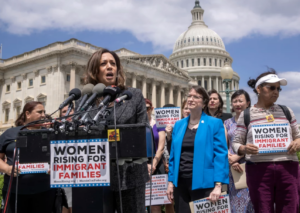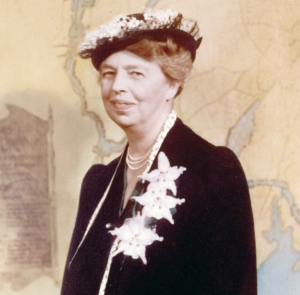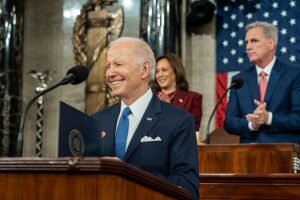The Role of Palestinian Force and Israeli Entrenchment
Analyzing the effects of Palestinian force against the Israeli occupation and Israel’s responsive entrenchment can advance understanding of the devolvement of the Oslo peace process in the early 2000s to the present-day status quo.

Image Credit: Zapomicron/Shutterstock
Like a Chinese “finger trap” (zhōngguó shǒuzhǐ xiànjǐng), Israel’s security and civilian presence in the West Bank has only tightened when fought with impulse and force. The impetus of Israel’s modern presence in the West Bank and the underlying factors for an ongoing occupation of the Palestinian people since 1967 indeed originated from surrounding Arab belligerence. Analyzing the effects of Palestinian force against the Israeli occupation and Israel’s responsive entrenchment can advance understanding of the devolvement of the Oslo peace process in the early 2000s to the present-day status quo.

Recent moves by Israeli Prime Minister Binyamin Netanyahu’s most right-wing cabinet put this dynamic on full display. The approval to legalize nine Israeli West Bank outposts in future Palestinian state territory, deemed illegal by most of the international community (among other measures), affirms that Israeli entrenchment is a recurring, direct response to the latest wave of Palestinian terror attacks. Terrorism is defined here as violence deliberately waged against civilians in order to coerce political gains. Inspecting the past two decades gives us a clearer picture as to how this pattern of violence and reinforcement took shape.
The only time Palestinians have ever historically gained territory is when they provided meaningful security assurances to Israelis, as during the early stages of the Oslo peace process, which established formal Palestinian autonomy between 1993-2000. The sole exception to this rule in the entire history of the Arab-Israeli conflict was during Israel’s unilateral disengagement in 2005 from the Gaza Strip. The withdrawal was not only an Israeli experiment to determine the viability of full Palestinian independence post-Oslo – it was a strategic effort of containment to deter suicide bombers and other Palestinian terrorists from entering Israeli civilian centers.
These bombing attacks dominated the five years prior (2000-2005), during the Second Intifada, which killed over 1,100 Israelis (about 70% of whom were unarmed civilians) in buses, restaurants, malls, hotels, and other centers. Reprisals from the Israeli military and internal Palestinian violence between factions during the Second Intifada placed the Palestinian death toll at a disputed three to five times that – more than half of whom were engaging in hostilities, according to the numbers of B’Tselem, an often-cited pro-Palestinian organization. Since the Gaza withdrawal and implementation of similar security measures (i.e. increased security checkpoints and the construction of primarily chain-link fencing), the lethality of Palestinian incursions, particularly suicide bombings, has decreased overwhelmingly — even with ongoing stoning, car-ramming, stabbing, and shooting attacks.
Following Israeli unilateral withdrawal from the Gaza Strip and the forced removal of 9,000 Israeli citizens, Hamas (Harakat al-Muqawwamah al-Islamiyyah, or the “Islamic Resistance Movement”) won Palestinian parliamentary elections. Hamas then launched a catastrophic takeover of Gaza, warring against their rival, the Fatah party-led Palestinian Authority government headed by Mahmoud Abbas in the West Bank (2006-2007). The internationally-recognized terrorist organization has fired over 20,000 rockets, missiles, and mortars aimed at Israeli civilians from the Gaza Strip–many citizens only have 15 seconds to run to a bomb shelter. A responsive Egyptian and Israeli blockade of war-fit materials, and several retaliatory wars have since ravaged much of Gaza.
Hamas’s drastic rise to power has exhausted most Israelis’ patience with the so-called “peace process”. It has reinforced Israeli perceptions of the implausibility of a West Bank withdrawal and has prompted a swing to the political right. Festering Palestinian government corruption, increased Palestinian support for Hamas in the West Bank, and tough Israeli security restrictions outside Palestinian autonomous areas have all contributed to more hardline Palestinian opponents of peace as well.
Although the Israeli-Palestinian conflict has one of the smallest casualty counts for its duration compared to any major Middle Eastern conflict, this cyclical violence has etched the Levant with intense bitterness and distrust. For perspective: in over 100 years, the Arab-Israeli conflict has produced less than 130,000 casualties. From 2011 to the present, the Syrian Civil War has created at least 600,000 casualties to date. The Iran-Iraq War (1980-1988) incurred at least 500,000 to 2 million disputed casualties.
International media plays an outsized role in shaping the narrative of related events. Just in the past month, what the media has dubbed as an ‘onslaught of Palestinians’ and series of ‘incidental [Israeli] deaths’ has contributed to a vast misunderstanding of the bloodshed on the ground. Such media bias is prolific with the intentional omission of Palestinian perpetrators of Israeli terror victims. International media has wrongfully depicted incidents, from headlines and the many listed Palestinian casualties to Israeli reprisals lacking description as armed members of insurgent groups.
The crucial context such outlets should enumerate is that for the past year, Israel has conducted “Operation Break the Wave”, an increase in counterraids of autonomous Palestinian areas, such as Jenin. Within these areas, armed Palestinian insurgents like the “Lion’s Den” deploy militants who both enter Israel proper and kill Jewish civilians, and embed themselves throughout urban civilian-dense areas for asymmetric advantage against the Israel Defense Forces (IDF).
Various terror attacks from such insurgents have prompted IDF responses. This includes the deliberate shooting of 10 unarmed Israelis, with 3 survivors outside a synagogue in Jerusalem, bombings at a bus stop, and the gruesome axing of unarmed Israelis killing three in the Israeli town of Elad on Israeli Independence Day. Subsequently, as part of Operation Break the Wave, IDF troops targeted 35 Palestinians, 31 of whom were confirmed armed terror operatives, with the remaining four being unarmed civilian casualties tragically caught in the crossfire (January 2023).
This past month NYU’s student government chose to recognize and mourn these Palestinian casualties by co-sponsoring a campus vigil for Jenin. However, vigils such as these join international media outlets in omitting crucial contexts and prey on the ignorance of most students on the conflict, even within a top university. Eighty-eight percent of the 35 West Bank Palestinian casualties in January were confirmed armed terrorists who have attempted or possess ties with organizations responsible for the murder of unarmed Israeli civilians. When such reprehensible factors are intentionally left unmentioned, we see the erosion of “the moral high ground for the Palestinian cause” and the increase of Israeli entrenchment.
What is understood internationally as a political conflict must not be severed from its cultural context. Since Palestinians obtained their first fruits of formal autonomy, including Palestinian Authority government institutions in the West Bank, they have been incubated in anti-peace rhetoric at the levels of media, education, politics, athletics, and religion. Collaboration between the so-called “moderate” Fatah-led Palestinian Authority government in the West Bank and its security personnel with terror operatives of other factions has undermined any semblance of trust with Israel. The systematic abrogation and distortion of Israeli history and the subjection of the Israeli people to discriminatory boycott measures have failed as a substitute for conclusive peace negotiations based on already recognized parameters. And the refusal to distinguish between unarmed civilians and armed terrorists (whether in mourning or celebration) is ubiquitous across the Palestinian rights movement. All of this has demonstrated a failure of ethical principles and efficacy to justly advance Palestinian rights.
Any loss of innocent life, whether Palestinian or Israeli, is a tragedy. Willfully ignoring Israeli psychology behind policy, conflating Israeli aspirations uniformly with that of foreign hegemons, and discarding other nuances regarding their consanguineous occupiers has proven an extremely costly consequence for the Palestinian people. The disregard for Israeli trauma, like Palestinian trauma, is as unstrategic to achieving independence as it is inhumane. Out of any marginalized people that have risen to a position of occupier, Jews are likely the least sensible choice to cast as the role of “Crusaders” or ephemeral colonial extractors.
The Palestinian insistence on being an heir to complete historical Islamic control of Palestine, without the historical baggage of Jewish dispossession and ramifications of repatriation in Palestine, brews perilous consequences in the twenty-first century. Accepting Jewish autonomy in part of historic Palestine can no longer be crossed off the menu (as it was rejected by Palestinians in 1937 at just 20% Israeli-designated land, and at least five more times with incrementally different arrangements through 2020). On the other hand, the Israeli rejection of greater Palestinian development in the interim status quo, and Israeli West Bank annexation prospects also remain threats to the Palestinians and to Israel’s long-term viability. Neither population will leave.
The latest diplomatic channels brokered by the Biden administration indicate small but notable moves toward calm. The US has convinced the Palestinian Authority to scale up counter-terrorism efforts and forgo a resolution to condemn Israel in the UN Security Council. In exchange, Israel has postponed new Israeli West Bank construction and evictions and demolitions of permit-less Palestinian homes. It has also committed to limiting IDF raids into major Palestinian cities and minimizing Jewish access to the Temple Mount during Ramadan. Through these concessions, President Biden has revived some trace of cooperation on the ground. This bit of success reflects more Palestinian Authority cooperation with the US than in any part of the Trump presidency’s “maximum pressure” campaign on the PA. However, as always, these gestures are not likely to last as detractors spoil the progress.
Part of the challenge includes the increasing lack of legitimacy and of monopoly on force that the PA has within their jurisdiction, absorbed by militant factions like the Lion’s Den, Palestinian Islamic Jihad (PIJ), and Hamas. One of the latest Palestinian car-rammings and point-blank shootings of two Israeli brothers (ages 19 and 21) on February 26 in Huwara and the subsequent revenge attack by Israeli settlers on Palestinians in the area, including the killing of a 37-year-old man, indicates devolvement into further conflict. These latest attacks took place after Israel Defense Forces targeted eight armed Palestinian terror operatives in Nablus. Four civilian casualties occurred in the crossfire, with attribution not yet certain. On March 9, three Israeli civilians were shot in Tel Aviv by a Hamas affiliate. In Beitar, an Israeli town of 60,000 (many who are Ultra-Orthodox and non-conscripting) Israelis were on lockdown as explosives were searched for throughout the community.
European leaders are beginning to discuss the need for a successor to 87-year-old PA President, Mahmoud Abbas, who has strictly held onto power for nearly two decades. Prime Minister Netanyahu, for his part, is not only struggling to curb corruption charges against himself unopposed through a judicial overhaul. He also lacks sufficient domestic support to provide major concessions to Palestinians in the near future with ongoing violence, for which he is cracking down even harder. The role of Palestinian force and Israeli entrenchment is conclusively political, with many players vying for more to add to their hands. Peace and justice demand major preliminary reforms in Israel-Palestine, but unilateralism on either side will not advance them.
Justin Feldman (he/him) is a second-year MA student in International Relations at NYU. He graduated from the University of California, Los Angeles in 2020 with a BA in International Relations and Middle Eastern Studies. With experience in the nonprofit and research sectors, Justin has led various inter-ethnic and interfaith initiatives, connecting Middle Eastern consular diplomats and entrepreneurs with grassroots leaders in the U.S. His primary research and travel focus on multipolarity, nationalist threats, and opportunities for ethno-religious diversity in the Middle East and North Africa. When he’s not immersed in current events and history, Justin enjoys cooking, binge-watching Marvel series, creating Hebrew and Arabic calligraphy, and hiking.








1 thought on “The Role of Palestinian Force and Israeli Entrenchment”